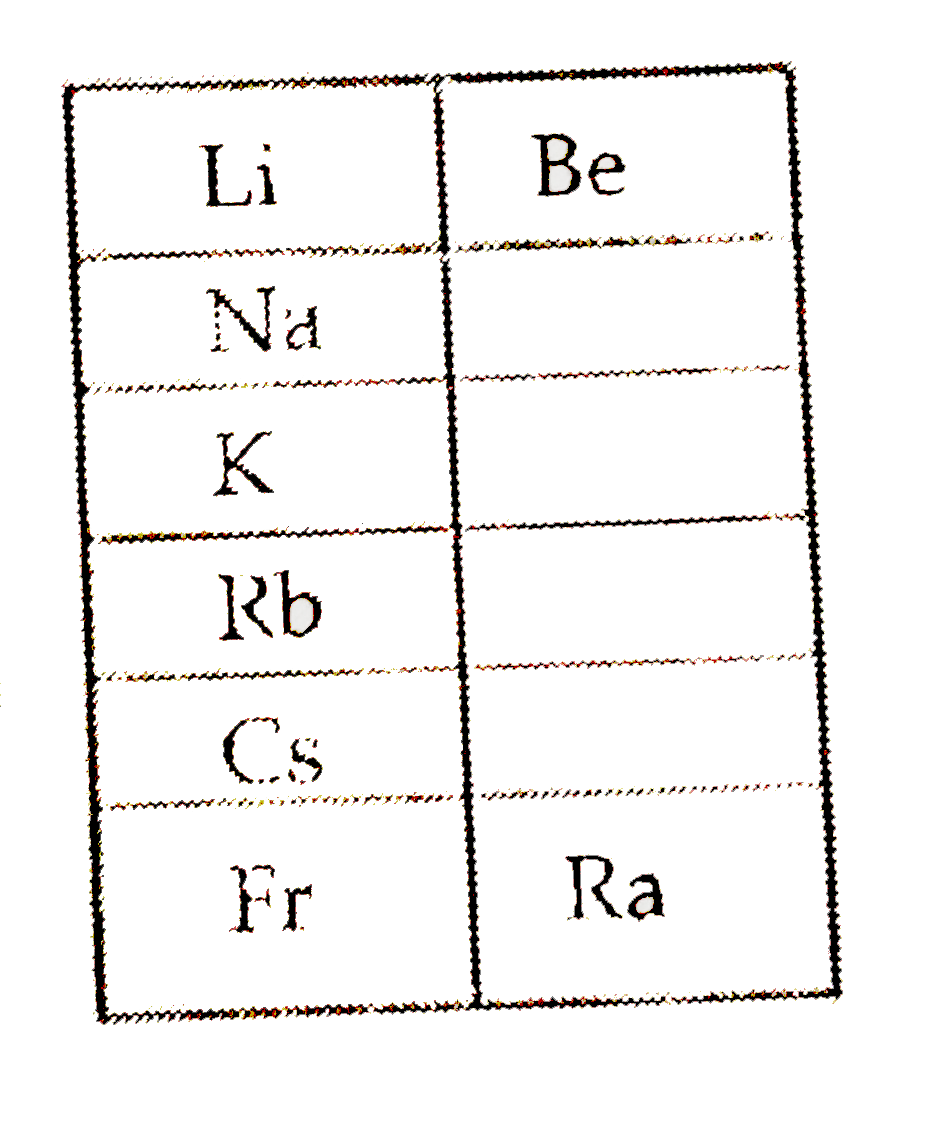(a) Why does the side of the atoms progressively become smaller when we move from sodium (Na) to chlorine (Cl) in the third period of the periodic table?
(b) Helium and neon are unreactive gases. What if anything do their atoms have in common?
The correct Answer is:(b) Helium and neon atoms have completely filled outermost electron shells (containing the maximum number of electrons which can be accommodated in them)
NA
Topper's Solved these Questions
- BOOK - LAKHMIR SINGH & MANJIT KAURCHAPTER - PERIODIC CLASSIFICATION OF ELEMENTSEXERCISE - SHORT ANSWER TYPE8videos
PERIODIC CLASSIFICATION OF ELEMENTS
- BOOK - LAKHMIR SINGH & MANJIT KAURCHAPTER - PERIODIC CLASSIFICATION OF ELEMENTSEXERCISE - LONG ANSWER TYPE3videos
PERIODIC CLASSIFICATION OF ELEMENTS
- BOOK - LAKHMIR SINGH & MANJIT KAURCHAPTER - PERIODIC CLASSIFICATION OF ELEMENTSEXERCISE - VERY SHORT ANSWER TYPE6videos
PERIODIC CLASSIFICATION OF ELEMENTS
- BOOK - LAKHMIR SINGH & MANJIT KAURCHAPTER - METALS AND NON-METALSEXERCISE - Short Answer Type Qustions1videos
METALS AND NON-METALS
- BOOK - LAKHMIR SINGH & MANJIT KAURCHAPTER - TEST PAPER 1EXERCISE - Section B4videos
TEST PAPER 1
Similar Questions
Knowledge Check
- Question 1 - Select One
In third row of periodic table the atomic radii from Na and Cl
AContinuosly decreasesBContinuosly increasesCRemains constantDIncreases but not continuously - Question 2 - Select One
Note: Read the assertion and reason carefully and then mark the correct option out of the options given below:
Assertion (A) : Non-metals like sulphur and chlorine are located on the left-hand side of the Periodic Table.
Reason (R ) : Atomic radius decreases in moving from left to right in a period.ABoth (A) and (R) are true and (R ) is correct explanation of the assertion.BBoth (A) and (R ) are true but (R ) is explanation of the assertion.C(A) is true but (R ) is false.D(A) is false but (R ) is true.
(a) Lithium, sodium and potassium are all metals that react with water to liberate hydrogen gas. Is there any similarity in the atoms of these elements ?
(b) Helium is an unreactive gas and neon is a gas of extremely low reactivity. What, if anything, do their atoms have in common ?View Solution(a) Lithium, sodium, potassium are all metals that react with water to liberate hydrogen gas. Is there any similarity in the atoms of these elements?
(b) Helium is an unreactive gas and neon is a gas of extremely low reactivity. What, if anything, do their atoms have in common?View Solution(a) Lithium, sodium, potassium are all metals that react with water to liberate hydrogen gas. Is there any similarity in the atoms of these elements?
(b) Helium is an unreactive gas and neon is a gas of extremely low reactivity. What, if anything, do their atoms have in common?View Solution(a) How does the size of atoms (atomic size) generally vary in ging from left to right in a period of the periodic table? Why does it vary this way?
(b) What happens to the metallic character of the elements as we move from left to right in a period of the periodic table?View SolutionThe atomic radii of the elements of second period are given below:

(a) Arrange these elements in the decreasing order of their atomic radii (Keeping the element with the largest atomic radius first).
(b) Are the elements now arranged in the pattern of a period in the periodic table?
(c) Which elements have the largest and the smallest atoms?
(d) From this data, infer how the atomic size (or atomic radius) of the elements changes as you go from left to right in a period?View Solution(a) What are the periods and groups in a periodic table? Give two characteristics of each.
(b) In terms of electronic condigurations, explain the variation in the size of the atoms of elements belonging to the same period and same group.
(c) Given alongside is a part of the periodic table. As we move vertically downward from Li to Fr:
(i) What happens to the size of atoms?
(ii) What happens to their metalic character?
(d) Name two properties of elements whose magnitudes change when going from top to bottom in a group of the periodic table. In what manner do they change?
(e) Rewrite the following statement after correction, if necessary:
Groups have elements with consecutive atomic numbers.
 View Solution
View Solution

